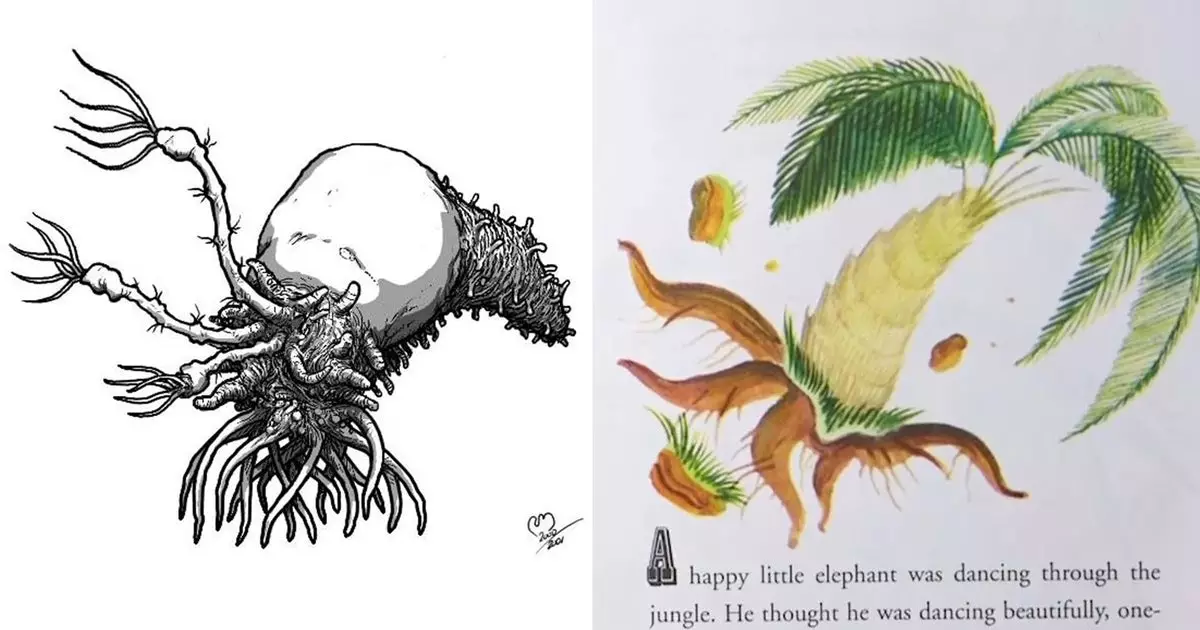Halo 2, a landmark title in the realm of first-person shooters, celebrated its 20-year anniversary recently. The event not only sparked nostalgia among fans but also resurfaced important discussions about the game’s development. Insights shared through a Rolling Stone interview with key developers shed light on the creative processes behind this iconic game, revealing how limitations in team size and an unconventional source of inspiration contributed to its legacy. Ultimately, the challenges faced by the developers are indicative of broader industry issues present even today.
The Origins of the Flood: Unlikely Inspirations
The bizarre, unsettling creatures known as the Flood are emblematic of adverse experiences blended with creativity. Surprisingly, these grotesque beings owe part of their existence to a children’s book titled “The Saggy Baggy Elephant.” Robert McLees, a designer at Bungie during the creation of Halo 2, detailed how the whimsical imagery of dancing elephants casually launching palm trees became an unexpected reference point for the game’s terrifying infection forms. This revelation points to the potent blend of childhood influences and modern creativity, suggesting that sometimes the most relatable elements of horror can emerge from innocence.
The juxtaposition of playful elements with a dark narrative showcases the intricacy of video game design. The Flood serves as more than mere antagonists; they symbolize an infection of both body and mind, creating a blend of horror that resonates with players. This duality enriches the gaming experience, showcasing the depth that can arise from imaginative leaps informed by personal history rather than industry convention. It is also a testament to how essential creativity can thrive within constraints, turning ordinary memories into creature concepts that bring varied experiences to life.
While the final products portray teamwork and collaboration, the reality behind Halo 2’s development was marked by considerable struggle and stress. The relatively small development team at Bungie meant that employees often wore multiple hats, leading to a high-stress environment. Lorraine and Robert McLees’ experiences reveal that flexibility and adaptability were necessary, pushing them to venture outside their original job descriptions. Lorraine not only contributed to the game’s cover art but was instrumental in designing the Pillar of Autumn, a ship now deeply embedded in gaming culture.
The intense working conditions, often referred to as “crunch,” have been a notorious aspect of the gaming industry. Many developers worked seven days a week, enduring significant pressure to deliver a product that could live up to the monumental expectations generated by the first Halo game. Robert’s remarks regarding the managerial fit within Bungie exemplify a systemic issue within the gaming industry: the creative roles often overlap with managerial responsibilities, which complicates the workflow as teams expand. The revelations serve as a cautionary tale about the potential hazards of unstructured workplace culture within creative industries.
Development crunch is an enduring symptom of the gaming industry’s push for exponential growth and quality. As chronicled in various interviews and accounts, the collective anxiety stemming from long hours and unrealistic deadlines can lead to burnout, affecting both individuals and teams. The historical context surrounding Halo 2 captures this pressing issue, lending a voice to the struggles that often go unseen amid the glitz of successful launches.
Industry-wide, these problems persist, as highlighted by ongoing reports of employee dissatisfaction in companies like Star Citizen and Diablo IV. The vocalizations of stress and frustration among developers signify a needed overhaul of corporate culture in game development. A healthy work-life balance, along with supportive managerial practices, could lead to better employee morale and, ultimately, superior products. The legacy of Halo 2 may serve as a reminder for both the successes and the hardships endemic to game development.
A Lasting Impact and Reflection
The 20-year anniversary of Halo 2 provides an opportunity not only to celebrate its gaming impact but also to engage in a reflection on the industry’s evolving practices. The power of inspiration drawn from unexpected places, coupled with the challenge of nurturing creativity under duress, illustrates a complex relationship between game design and developer wellbeing.
As we reminisce about the game’s memorable characters and landscapes, it is also crucial to continue advocating for healthier workplace environments. Transcending beyond nostalgia, the conversation surrounding Halo 2 highlights the importance of prioritizing mental health and sustainable work practices while fostering innovation. As the industry advances, aspiring developers can look back at these narratives to inform a more balanced approach to creating the next generation of iconic gaming experiences.

